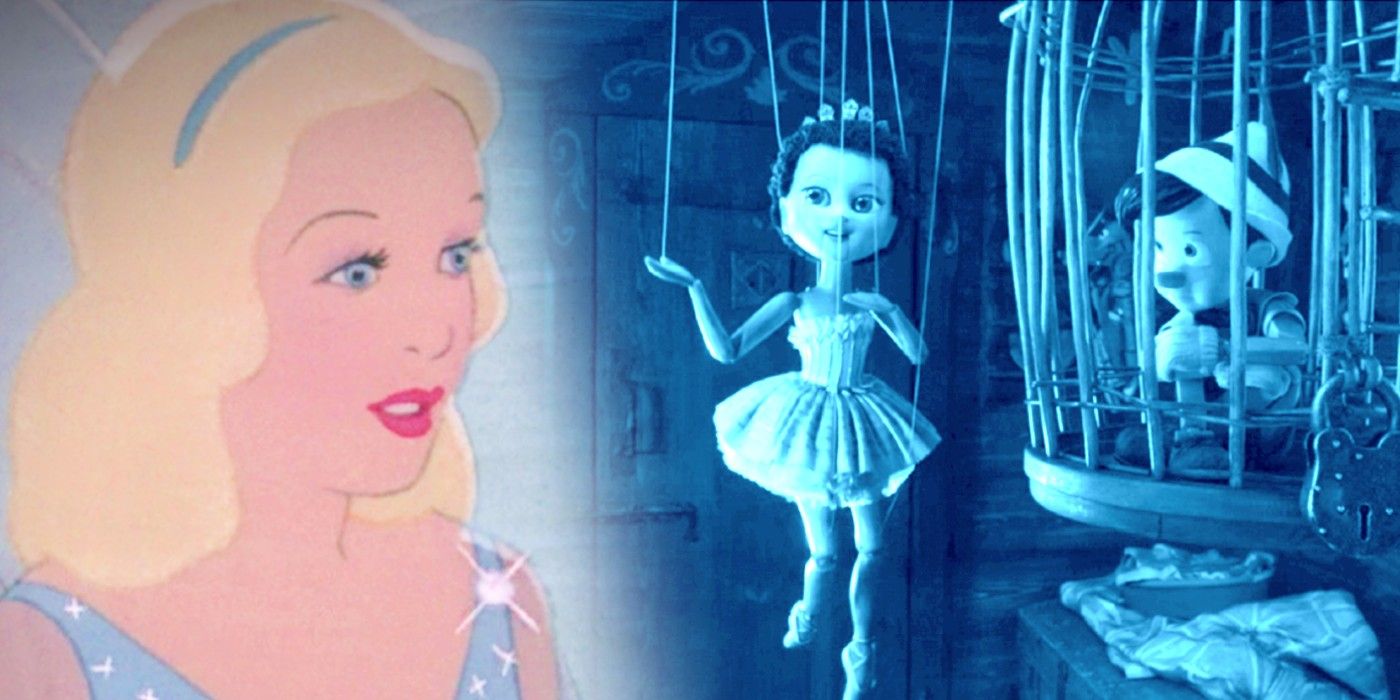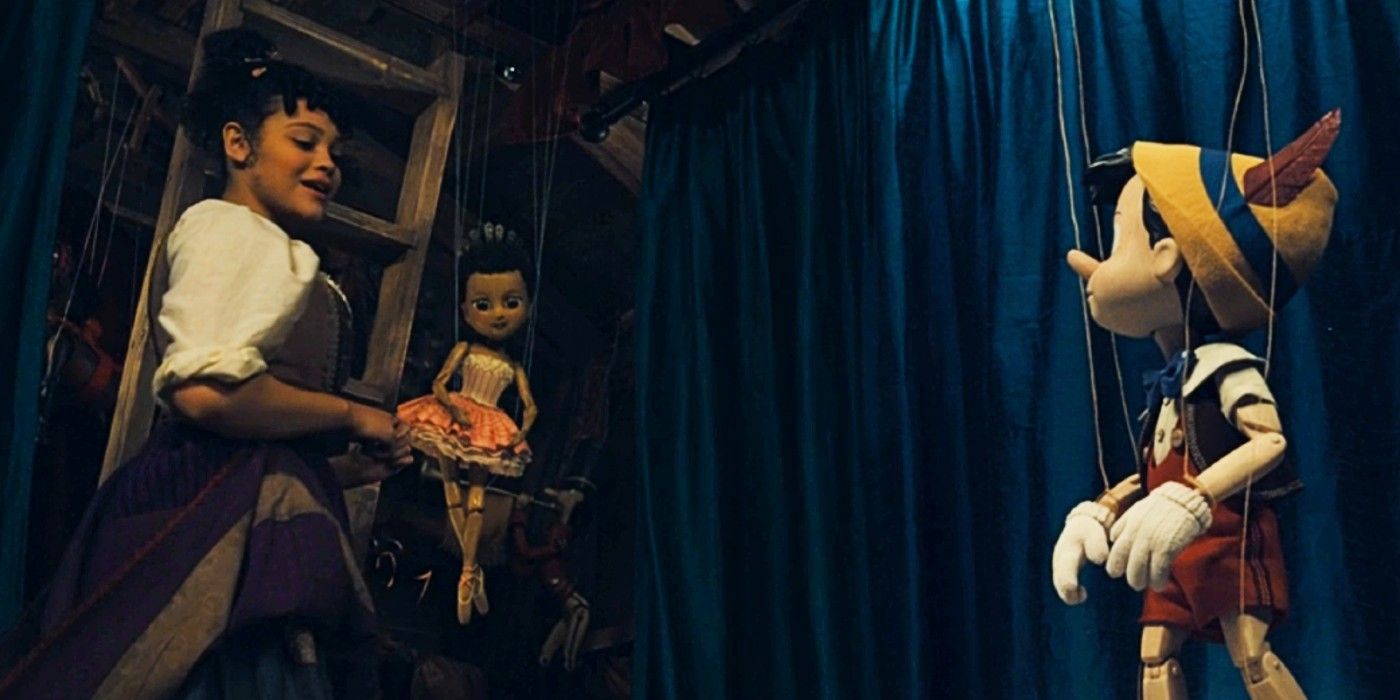Warning: Contains SPOILERS for PinocchioDisney’s original Pinocchio was a hard act to follow, but a remake had justification with new characters added to fix the original’s plotholes and shortcomings. Although Disney+’s live-action Pinocchio remake failed to capture audiences like the original animated film, it wasn’t without its merits and charming moments. Remakes don’t always live up to their antecedents, but it doesn’t mean there wasn’t room for improvement or something new to be done with a classic story.
Fabiana, played by Kyanne Lamaya, and her ballerina puppet Sabina weren’t in the original Disney movie but joined the cast as new characters in the Pinocchio remake. Depicted as one of the performers exploited by Stromboli’s puppet show, Fabiana was a talented puppeteer with dreams of dancing and a brace she had to wear. Sometimes interacting through Sabina, Lamaya arguably provided the best song on the Pinocchio remake’s soundtrack, “I Will Always Dance,” and stood out as one of the film’s highlights.
Ideally, a remake shouldn’t happen unless filmmakers can improve upon the original or tell a new story with it, and in the case of Pinocchio, there was an effort to do both. Fabiana’s story was unique to the remake, attempting to iron out plotholes, and explore a new narrative. There was a reason for Pinocchio to be remade and something different to be tried with new characters in a classic story because while considered a masterpiece of animation, the original film wasn’t perfect.
Why Fabiana & Sabina Are A Perfect Update For Pinocchio
The animated Pinocchio left plots unresolved and many questions unanswered. The Pinocchio remake added Fabiana and her puppet as a way to fix its biggest plothole while finally giving closure to one of Disney’s classic movie villains. In the original animated movie, the Blue Fairy inexplicably only saved Pinocchio once, from Stromboli, raising the question of why she couldn’t help at any other point in his adventure. In the remake, it made more sense that the Blue Fairy was absent for most of the movie, and her role became divided between Fabiana and Jiminy Cricket to assist their wooden friend. In this version, Fabiana helped Pinocchio escape from Stromboli’s cage and saw that justice was served this time by having the puppetmaster arrested. It is evident Disney tried to make Pinocchio’s story more endearing and sensical through Stromboli’s new troupe. A Pinocchio remake may not have been necessary, but the idea to improve on the previous story’s shortcomings through new characters had some merit.
The best Disney remakes don’t try to recreate the original story but instead tell their own. The idea of a performer who described herself as “half-marionette” because she needed assistance to walk but seemed more human than most of the characters in Pinocchio’s cast was something the original film never explored. Fabiana seeing herself as a dancer while everybody else saw her brace proved to be an interesting parallel to Pinocchio, who others only recognized as a puppet. Fabiana’s marionette Sabina, on the other hand, was a way for her to present how she saw herself and wished to interact with the world. As a character, Fabiana’s brace was part of who she was; however, she refused to let it define her or limit her dreams. Through Stromboli's performers, Disney+’s Pinocchio managed to tell a new inclusive story that the original lacked and made for a worthwhile addition to the mythology.
Remaking Pinocchio may have been a divisive idea like many of Disney’s upcoming live-action remakes, but one worth attempting. Fairy tales evolve, allowing different storytellers to expand, deconstruct, and adapt them. In the case of Fabiana and Sabina, Pinocchio was more than just a retelling of a Disney classic, but rather an opportunity to expand upon it.


